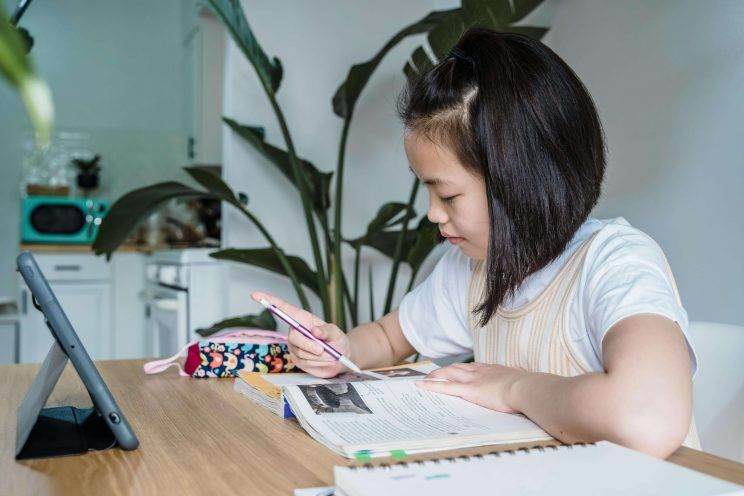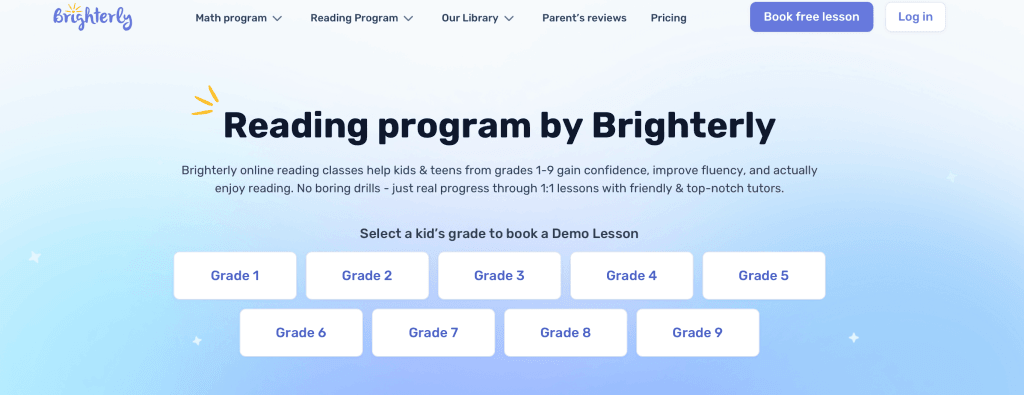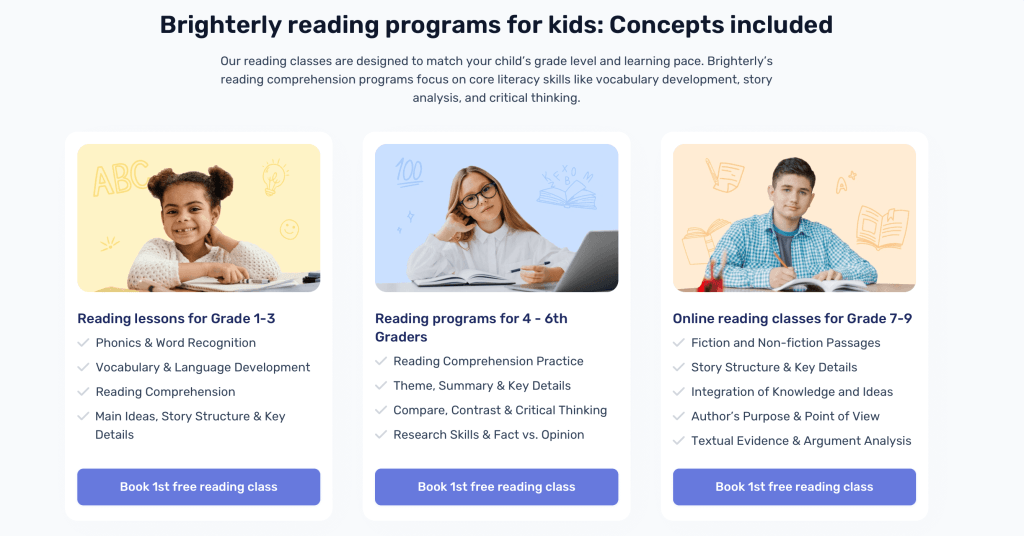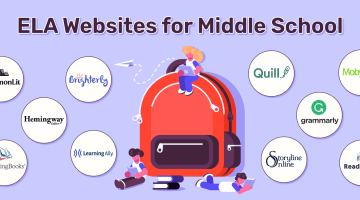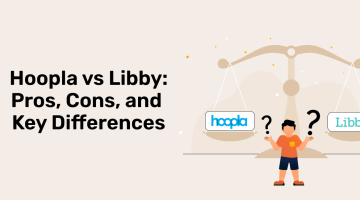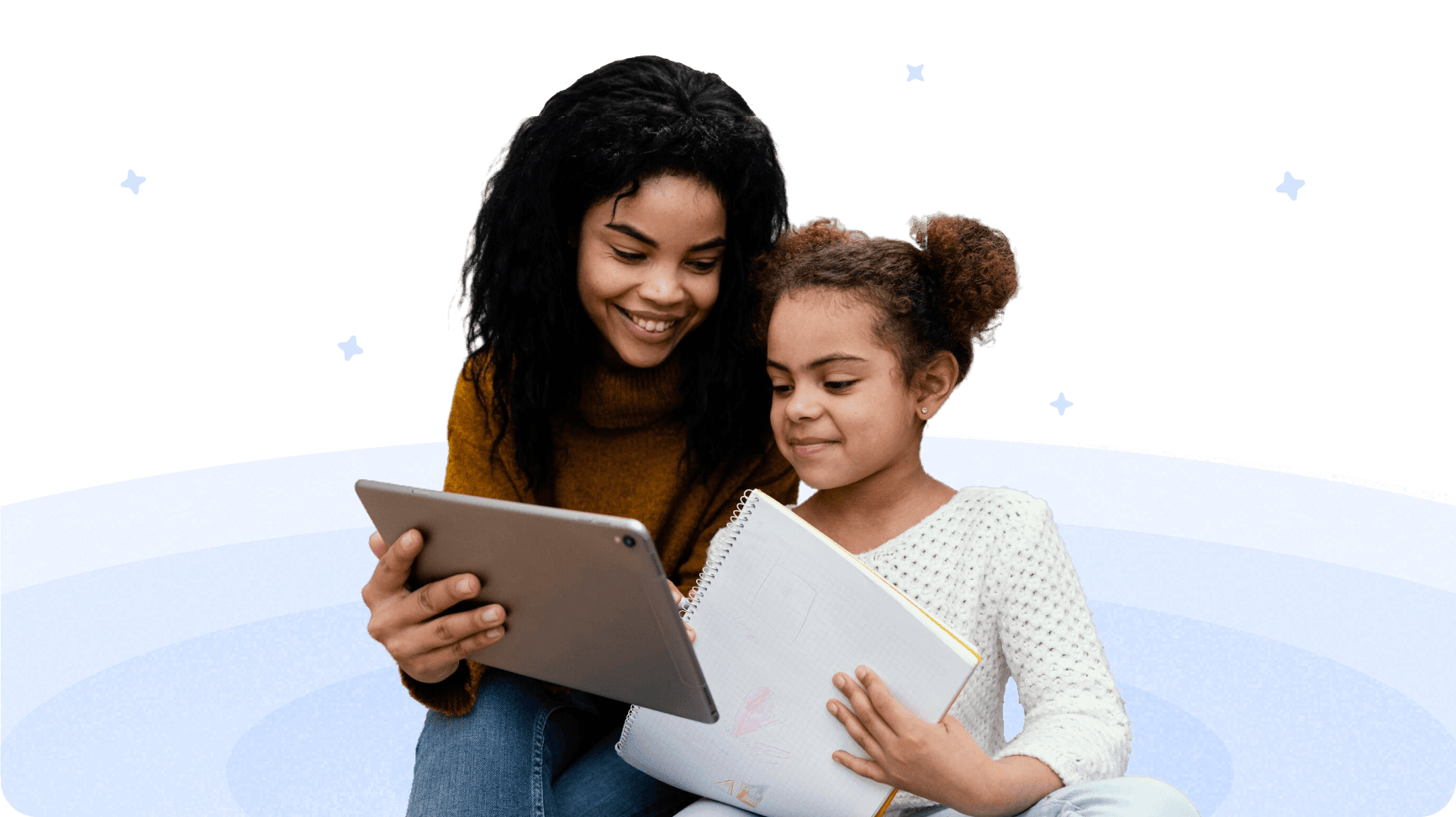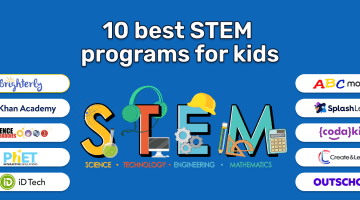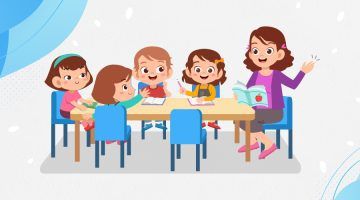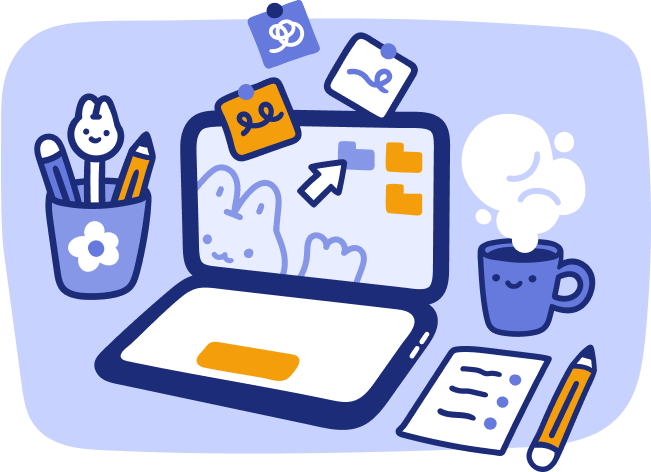IEP Goals for Reading: How to Support Your Child’s Success
reviewed by Franz Jerby Delos Santos
Updated on September 18, 2025
Reading is one of the most critical skills taught in school. Still, for some children, reading smoothly and understanding the text is as hard as solving a puzzling task. To provide students with the right support, US schools utilize the so-called IEP goal for reading comprehension. In this article, I’ll share, as a reading teacher, what this plan is and how it can be practically applied.
Key points
- Individualized Education Program (IEP) goals are step-by-step reading targets that help to understand the child’s educational gaps.
- This article includes examples of such student goals, which follow the SMART system (specific, measurable, achievable, relevant, and time-bound).
- These goals consider the child’s needs, age, and abilities and focus on Phonemic Awareness, Fluency, Comprehension, and Vocabulary & Word Knowledge.
- The best way to help a child with reading is to involve experienced Brighterly teachers, who will consider all difficulties and create a personalized program.
What are reading comprehension IEP goals?
Reading comprehension IEP goals are specific skills a child is working on to improve their understanding and use of what they read. A child might want to learn how to identify the main idea of a paragraph or to read a text clearly, quickly, and with the right intonation.
Another typical reading IEP goal could be to answer 90% of the follow-up questions correctly after reading a story. Or they could have a goal to read and understand a simple instruction from a board game. Of course, these learning lists are created based on the child’s age and skill level.
What do typical IEP goals for reading look like?
Typical IEP goals for reading set clear, achievable targets to guide their progress and solve the problem of reading comprehension. Reading goals for struggling readers are always specific and measurable, focusing on concrete skills rather than vague promises.
For example:
- Decoding: “The student will correctly read 8 out of 10 multisyllabic words.”
- Fluency: “By the end of the year or term, the student will read aloud at 90 words per minute with 90% accuracy.”
- Comprehension: “When given a short passage, the student will answer 4 out of 5 questions correctly.”
If you want to understand reading struggles better, explore reading statistics and facts, and learn how ADHD and reading might affect a child’s progress.
Key basic reading IEP goals for students
Typical basic reading skills IEP goals include recognizing letters and sounds, using a word bank to read simple words correctly, and reading short sentences aloud with high accuracy. These foundational targets ensure children develop strong early literacy skills that give them the confidence to tackle more complex texts.
What are the reading goals for students 1-12?
- Grades 1–3: Decoding words, reading aloud fluently, answering basic story questions.
- Grades 4–6: Summarizing texts, using context clues, answering comprehension questions.
- Grades 7–12: Analyzing themes, comparing texts, making inferences, building advanced vocabulary.
Who sets IEP reading goals?
IEP goals are created by a team, including teachers, specialists such as psychologists or speech therapists, and parents. Together, they discuss the child’s needs, and then the special education teacher writes the goals into the IEP document. Parents review them and suggest changes.
Factors considered before setting IEP goal for reading fluency
- Strengths: can have a strong vocabulary, but a slower reading speed.
- Challenges: for instance, trouble with comprehension or focus.
- Grade level and standards: to help the child catch up with peers.
- Individual needs: such as ADHD, dyslexia, or other learning differences.
Only after reviewing all of this, the professional decides which skills are of the highest importance.
Next, I’ve put together a simple table with IEP reading goals examples. The table will give you a clear idea of what these goals look like in real life and how they can support your child’s learning step by step.
IEP goal for reading: Examples
Skill |
Reading fluency goals |
| Phonemic Awareness & Phonics |
– The student identifies beginning, middle, and ending sounds in words with 80% accuracy. – The student decodes consonant-vowel-consonant words with 85% accuracy in 4 of 5 trials. |
| Fluency |
– The student reads a passage aloud at 90 words per minute with fewer than 5 errors. – The student uses punctuation to guide expression when reading aloud. |
| Comprehension |
– After reading a sample text, the student answers who/what/where/when questions with 80% accuracy. – The student correctly identifies the main idea and 2 supporting details from a short passage in 4 of 5 trials. |
| Vocabulary & Word Knowledge |
– The student uses context clues to determine the meaning of unknown words. – The student defines and uses 10 new vocabulary words from class readings each month with teacher support. |
| Real-Life Skills (Applied Reading) |
– The student reads and follows written directions with 90% accuracy. – The student reads and interprets a simple schedule, menu, or map in 4 of 5 trials. – The student locates key information, such as time, date, or place, in a short real-world passage with 80% accuracy. |
Although SMART goals for reading are relatively clear, parents and teachers may struggle to implement them effectively. That’s where professional guidance and a well-structured program make a difference. Brighterly math and reading platform offers personalized one-on-one reading lessons with experienced tutors. They will tailor reading lessons to your child’s unique challenges, whether it be word decoding, comprehension, or vocabulary.
Also, the platform provides structured interactive exercises for students in grades 1-9. It provides step-by-step skill-building plans, tracks real progress, keeps kids motivated with interesting learning activities, and uses proven strategies to help overcome reading difficulties.
The table below clearly shows how the Brighterly program helps children with reading difficulties achieve their IEP objectives.
Goals |
How Brighterly helps |
| Phonemic Awareness & Phonics (identification of sounds) |
– 1:1 phonics practice with interactive games and guided sound recognition. – The program includes step-by-step decoding exercises and instant feedback. |
| Fluency (quick and clear reading) | – Brighterly utilizes timed and repeated oral reading practice with progress monitoring. |
| Comprehension (text flow and core ideas understanding) | – Tutors guide reading with constant comprehension checks and story-mapping |
| Vocabulary & Word Knowledge (enriching a child’s vocabulary) | – Multiple interactive texts, personalized vocabulary cards, and games with teacher-guided word exploration |
| Real-Life Skills (finding key information, following instructions, etc.) |
– Tutors utilize real-world materials integrated into lessons. – Practice with recipes, instructions, and checklists. |
Note: The key to success is having the right mentor who truly cares. At Brighterly, reading tutors are certified and carefully selected to be that support for your child.
How to work with an IEP objectives for reading comprehension?
The way to work with an IEP reading goal is to break it down into small, clear steps. For example, a goal might say that by the end of the month, a child should be able to read with expression or notice punctuation marks. From there, it’s up to teachers or parents to pick activities that would help to build that skill. You can use worksheets, short exercises, or even fun board games – just make the practice both meaningful and engaging.
IEP reading goals for elementary students
IEP goals for basic reading skills are based on grade-level literacy standards and reflect what students are expected to achieve at an elementary educational level. They cover primary skills such as fluent reading, comprehension, and the ability to analyze text.

To make these goals measurable and individualized, we can break them down by age group. Below, I’ve outlined specific examples in numbers and percentages, so you can clearly see the expected progress for each student.
Reading goals for IEP 1st – 2nd grade
- The student fluently reads simple sentences, short passages, and sight words.
- The student reading a short story can answer 3 out of 4 comprehension questions (who, what, where, when) with 80% accuracy.
- The student decodes words in a list of 20 with 85% accuracy across 3 consecutive assessments.
Reading IEP goals for 3rd – 5th grade
- The student reads a passage aloud at 90 words per minute with fewer than 5 errors across 3 consecutive trials.
- The student properly identifies the main idea and 2 supporting details in 4 out of 5 trials with 80% accuracy.
Reading goals for IEP – middle school
The requirements become more rigorous as students transition into middle school (grades 6–8):
- The student cites textual evidence to support an answer in both fiction and nonfiction texts in 4 out of 5 opportunities with 80% accuracy.
- When given two grade-level texts on a similar topic, the student can compare and contrast key ideas in writing with 80% accuracy on 3 consecutive assignments
Reading comprehension IEP goals for high school students
Finally, let’s review some of the basic reading goals for IEP for high school students. At this level, goals reflect advanced literacy skills:
- The student is capable of analyzing how an author’s word choice affects meaning and emotional tone, providing 2 supporting examples in writing in 4 out of 5 graded assignments with at least 80% accuracy.
- When given the task of a research prompt, the student is able to locate, summarize, and cite at least 2 reliable sources, producing a written response that meets rubric standards in 3 consecutive tasks.
Strategies for IEP reading goals
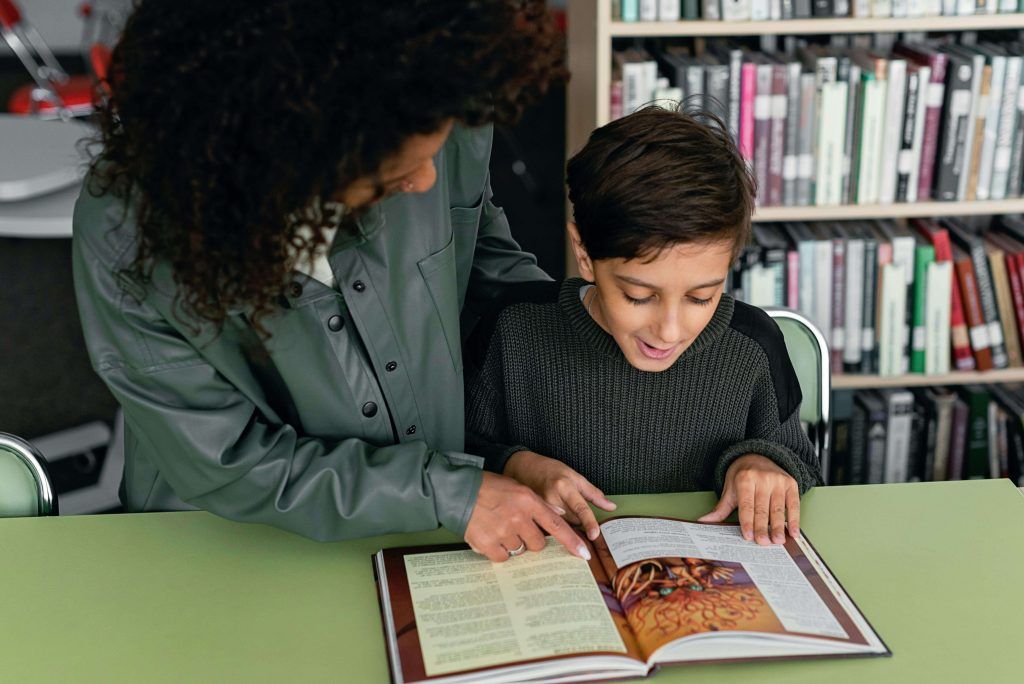
When I work with students on IEP reading goals, I like to break everything into small, doable steps. One day, we practice decoding tricky words, the next, we focus on reading aloud with confidence. Over time, these little milestones add up. Now, let’s explore some of my favorite tools and strategies.
Top ways to deal with a reading goal for IEP
- Use reading worksheets for kids
- Personalized reading tutors
- Mini-quizzes and progress tracking
- Encourage daily reading practice
- Use context clues and vocabulary strategies
Use reading worksheets for kids
When I use Brighterly’s reading worksheets for kids with my students, I enjoy how the worksheets break reading into manageable steps. Worksheets help kids practice decoding words, understanding sentences, and answering questions, and they’re great for working toward a reading fluency goal. It’s a simple tool, but it gives both me and the student a better view of progress.
Personalized reading tutors
One-on-one tutoring is of utmost importance. A tutor can adapt lessons to the child’s pace, celebrate successes, and guide them through challenges. I’ve seen how personalized attention can turn reading into something exciting instead of stressful. And, as I’ve already mentioned, Brighterly teachers are certified and carefully selected to be supportive mentors for every child.
Mini-quizzes and progress tracking
Kids love seeing their own progress! Short quizzes, checklists, or progress charts show them that they’re improving. Small wins keep motivation high and help to adjust lessons to focus on what matters most.
Encourage daily reading practice
Even 10-15 minutes of reading per day can make a massive change. I encourage turning daily reading into a habit that gradually improves fluency and expands vocabulary. For some kids, especially those working on an IEP for reading, this daily routine is key to steady progress. Over time, practice helps reading feel natural instead of stressful.
Use context clues and vocabulary strategies
I often show kids how to figure out the meaning of a new word right from the text. For example, if a word looks unfamiliar, we check the sentences around it — sometimes there’s a hint, an example, or even a similar word. That way, they can guess the meaning from context.
Another trick is to break the word into parts: prefix, root, suffix. It’s like solving a little puzzle without a dictionary. For kids, it feels fun, and they love the independence, like they’re the ones who figured it out. Step by step, this makes them more confident and turns reading into a social skill they can use in any subject.
Conclusion
IEP goals give children a clear path to make progress in reading, targeting decoding, fluency, comprehension, and vocabulary. By breaking skills into achievable milestones and using supportive strategies, teachers and parents can track real progress and help kids feel confident. For the best results, I would recommend trying reading strategies for struggling readers. You can also book free reading lesson to see how student-centered learning works in practice.

